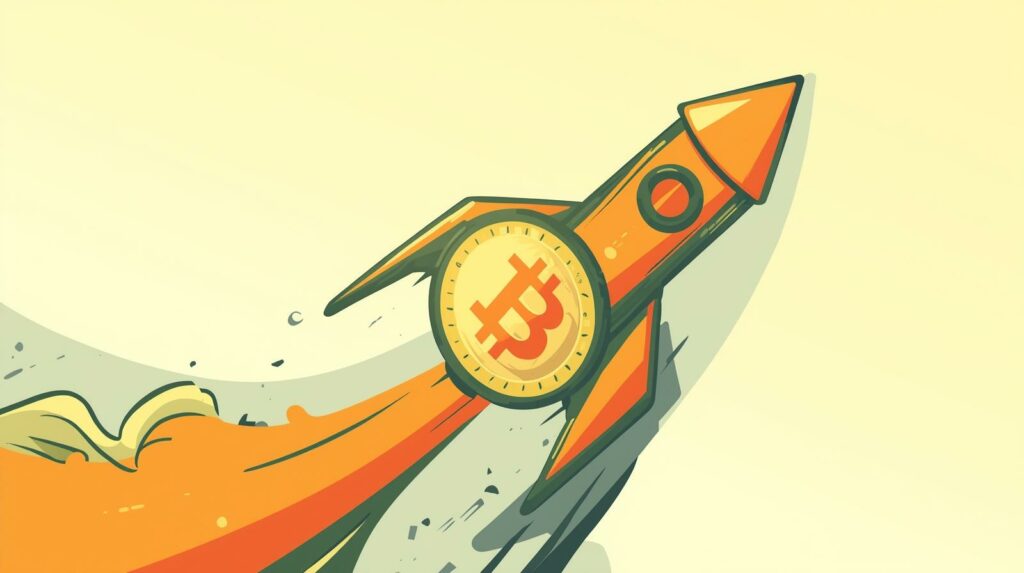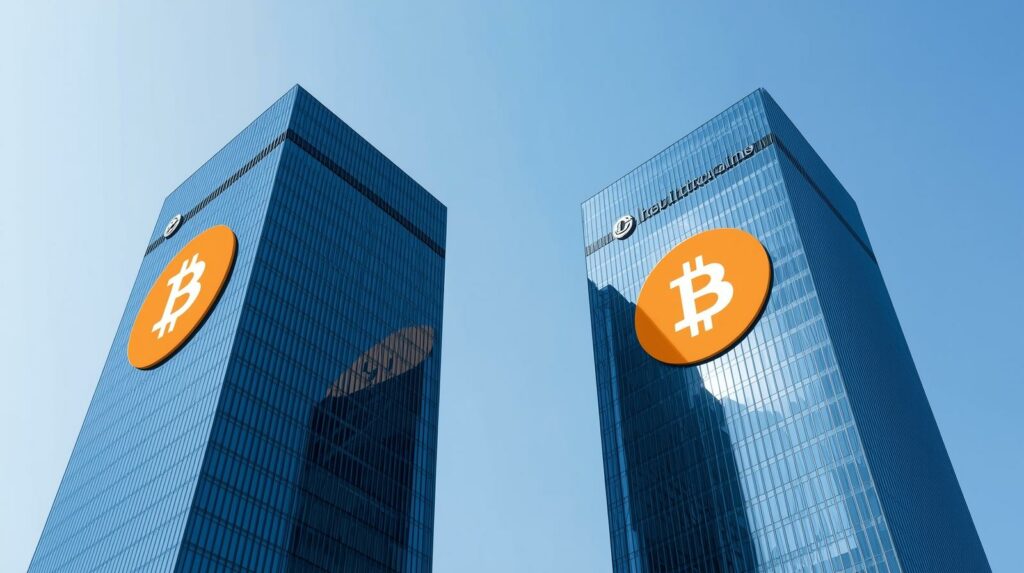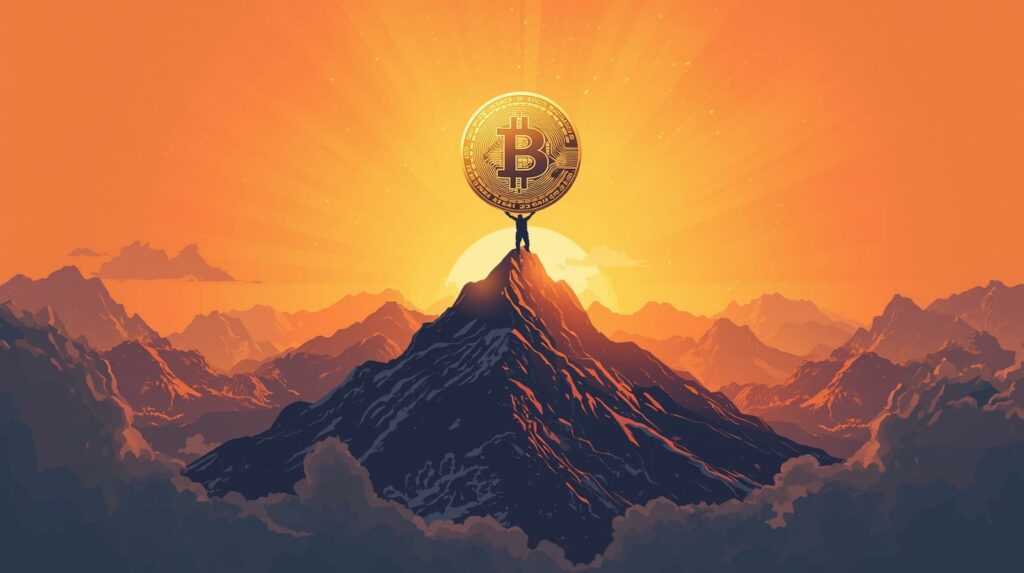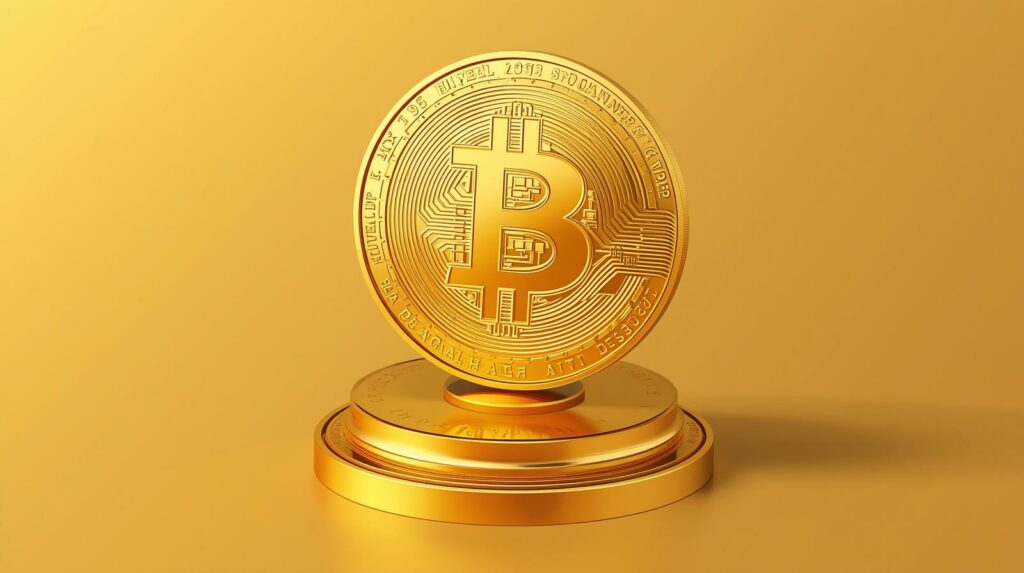You may also like:
The Beginning: When Bitcoin Was Worth Less Than a Penny
What was the first time you heard about Bitcoin?
Probably 2009…
and most people dismissed it as internet monopoly money.
The first recorded Bitcoin trade happened in late 2009 when someone exchanged 5,050 Bitcoins for just $5.02 via PayPal, making each Bitcoin worth approximately $0.00099—less than one-tenth of a penny.
Back then, nobody was tracking Bitcoin against the Swiss Franc because, frankly, nobody thought it would matter.
The Swiss Franc has always been considered one of the world’s most stable currencies, a safe haven that weathers economic storms.
Bitcoin?
It was an experiment by an anonymous person named Satoshi Nakamoto, who disappeared shortly after launch.
The Pizza That Changed Everything (2010)

In May 2010, a programmer named Laszlo Hanyecz made history by paying 10,000 BTC for two pizzas.
At that time, those 10,000 Bitcoins were worth somewhere between $25 and $41 total.
Today, as I write this in October 2025, those same 10,000 Bitcoins would be worth over $1.1 billion dollars.
Let that sink in.
This wasn’t just an expensive meal—it was proof that Bitcoin could be used as real money.
By late 2010, Bitcoin was trading between $0.10 and $0.30, and for the first time, people started wondering if this digital experiment might actually survive.
The First Major Rally (2011-2013): From Pennies to Hundreds

The price of Bitcoin saw its first major rally in 2011, soaring from $0.30 to $29.60.
That’s a nearly 10,000% increase in a single year.
I watched from the sidelines, kicking myself for not buying in at a few cents.
Then came 2013, which was a milestone year for Bitcoin.
The cryptocurrency achieved over 5,500% growth, reaching a peak value of $1,156.
The world started paying attention.
Major media outlets covered Bitcoin.
Your parents started asking you about it at dinner.
Bitcoin’s market cap exceeded $1 billion for the first time ever, and the world’s first Bitcoin ATM was installed in Vancouver.
Against the Swiss Franc, Bitcoin was equally impressive.
While I don’t have exact CHF data from those early years (most exchanges didn’t offer BTC/CHF pairs yet), we can extrapolate that Bitcoin would have gone from fractions of a Swiss centime to hundreds of francs in just four years.
The Mt. Gox Crash and Crypto Winter (2014-2016)

Then disaster struck.
The Mt. Gox hack in 2014 led to a severe drop and a two-year bear market, with Bitcoin falling to a low of $218.
This was the first time many Bitcoin believers truly questioned whether it would survive.
The cryptocurrency that had been worth over $1,000 was now struggling to stay above $200.
This is when I learned that Bitcoin wasn’t just a currency—it was something else entirely.
Currencies don’t typically lose 80% of their value and survive.
But Bitcoin wasn’t behaving like the US dollar or Swiss Franc.
It was behaving like real estate during a market crash.
The fundamentals were still there—the blockchain technology, the fixed supply of 21 million coins, the growing network of users—but the price had simply gotten ahead of itself.
The Digital Real Estate Revelation (2017-2018)

2017 changed everything again.
Bitcoin experienced dramatic appreciation, eventually reaching $20,000 by December.
But what fascinated me more than the price was the realization dawning on institutional investors:
Bitcoin wasn’t just digital money.
It was digital real estate.
Think about it.
Real estate is valuable because:
- There’s only so much of it (scarcity)
- Everyone needs it (utility)
- Its location matters (network effects)
- You can build on it (programmability)
- It appreciates over time despite short-term crashes
Bitcoin has all these properties.
There will only ever be 21 million Bitcoins—that’s the digital equivalent of “they’re not making any more land.”
As more people adopt Bitcoin, each coin becomes more valuable, just like property in a growing city.
And the blockchain infrastructure allows people to “build” financial applications on top of Bitcoin.
Against the Swiss Franc during this period, Bitcoin’s performance was equally stunning.
The all-time high price of 1 BTC in CHF is Fr. 100,293.
The stable, conservative Swiss Franc—the currency that had been a safe haven for centuries—was being dramatically outperformed by this 8-year-old digital asset.
The Institutional Wake-Up Call (2020-2021)

The COVID-19 pandemic in March 2020 sent Bitcoin crashing 63% to a low of $4,000, but then something remarkable happened.
While traditional markets struggled, Bitcoin began a historic rally.
By April 2021, Bitcoin hit a new all-time high of $64,895.
But more importantly, the narrative had shifted.
Major firms like Tesla and MicroStrategy added Bitcoin to their balance sheets.
Traditional financial players launched crypto products, and payment platforms like PayPal and Venmo enabled users to buy, hold, and sell cryptocurrencies directly.
This wasn’t retail speculation anymore.
This was institutional recognition that Bitcoin was a legitimate asset class—digital real estate that belonged in diversified portfolios alongside stocks, bonds, and traditional real estate.
The Crypto Winter and Resilience (2022-2023)

By 2022, markets cooled and the so-called “crypto winter” hit hard, with prices falling and several high-profile collapses shaking investor confidence.
Bitcoin dropped back below $20,000, and critics declared it dead (again).
But here’s where the real estate analogy proved most powerful.
Just as property values crashed in 2008 but Manhattan real estate eventually recovered and reached new highs, Bitcoin’s fundamentals remained intact during the winter.
The blockchain kept processing transactions.
The halving schedule continued.
The network grew stronger.
And patient investors who understood they were holding digital real estate, not just speculating on a currency, kept accumulating.
In Swiss Franc terms, this period was equally brutal but equally revealing.
Bitcoin crashed from highs near CHF 60,000 to lows around CHF 20,000.
Yet the Swiss National Bank never wavered in its own currency management, proving that Bitcoin’s volatility was a feature of its youth, not a fatal flaw.
The 2024-2025 Renaissance

The launch of Bitcoin spot ETFs in January 2024 marked another watershed moment.
Bitcoin surged to a new all-time high of $73,608 in March 2024.
Traditional investors could now gain exposure to Bitcoin through their regular brokerage accounts—no need to understand private keys or hardware wallets.
The 2024 U.S. presidential election brought even more momentum.
Bitcoin surpassed $73,000 before the vote and skyrocketed above $82,000 after Donald Trump’s victory, with expectations of favorable crypto policies.
On inauguration day, January 20, 2025, Bitcoin hit a new record, surpassing $109,000.
By mid-2025, Bitcoin reached its highest point yet—topping $120,000 in July, and even briefly touching $126,000 in October.
From 2009 to 2025, the BTC price in USD increased approximately by 11.18 billion percent.
Let me repeat that: eleven billion percent.
Against the Swiss Franc, the story is similarly astounding.
Bitcoin reached an all-time high of Fr.100,638.67 CHF on October 6, 2025. The BTC/CHF rate increased by 27.16% in just the last six months of the reporting period.
Even measured against one of the world’s most stable and respected currencies, Bitcoin proved its value as a digital store of wealth.
Understanding Bitcoin as Digital Real Estate

After watching Bitcoin for 16 years, I’ve come to understand it through the lens of digital real estate, and this framework has helped me make sense of both the volatility and the incredible returns.
Scarcity
Just as Manhattan has limited land, Bitcoin has only 21 million coins.
No government can print more.
No developer can create additional supply.
This digital scarcity is enforced by mathematics and cryptography, making it even more reliable than physical scarcity.
Location, Location, Location
In traditional real estate, location is everything.
In Bitcoin, your “location” is your position in the adoption curve and your understanding of the technology.
Early adopters got “beachfront property” at pennies.
Late adopters are buying “downtown apartments” at six figures.
But unlike physical real estate, Bitcoin is infinitely divisible—you can own 0.001 BTC just as easily as 1 BTC.
Network Effects

A house in a thriving city is worth more than an identical house in a ghost town.
Bitcoin’s value grows with its network.
Every new user, every new merchant accepting it, every new institution adding it to their balance sheet increases the value of the entire network.
The United States now holds more than 198,000 BTC, valued at over $20 billion.
When nation-states become holders, you know the network effect is powerful.
Buildability
Just as you can build apartments, offices, or shops on real estate, developers can build financial applications on Bitcoin’s blockchain.
The Lightning Network for fast payments, wrapped Bitcoin for DeFi applications, and other innovations are like constructing buildings on valuable land.
Appreciation Through Cycles
Real estate goes through boom and bust cycles, but prime locations tend to appreciate over decades.
Bitcoin has crashed multiple times—down 80-90% in 2014, down 80% in 2018, down 70%+ in 2022—yet each cycle bottom has been higher than the previous cycle.
This is exactly how real estate in desirable locations behaves.
The Swiss Franc Comparison: Stability vs. Growth

Comparing Bitcoin to the Swiss Franc is particularly instructive because the CHF represents everything Bitcoin is not: stable, government-backed, centuries-old, and managed by one of the world’s most conservative central banks.
Yet this comparison reveals why Bitcoin matters.
The Swiss Franc is an excellent currency for preserving wealth over short to medium time periods.
It doesn’t lose value erratically.
It’s widely accepted.
You can sleep soundly holding Swiss Francs.
But look at the 16-year comparison.
If you had converted 1,000 Swiss Francs to Bitcoin in 2010 when Bitcoin was trading at $0.30 (about CHF 0.27 at the time), you would have gotten approximately 3,700 Bitcoins.
Today, those would be worth over 300 million Swiss Francs.
Even if you’d bought much later—say in 2015 when Bitcoin was around $250 (roughly CHF 240)—your investment would still be up nearly 400-fold by October 2025.
The Swiss Franc preserved your wealth beautifully over this period.
Bitcoin multiplied it exponentially.
Both served their purposes, but they served different purposes.
What Bitcoin Is Really Telling Us
Bitcoin’s 16-year journey from $0.00099 to over $120,000 isn’t just a story about getting rich quick (though plenty of people did).
It’s a story about what happens when you create digital scarcity in an increasingly digital world.
We’ve been digitizing everything for decades—music, books, movies, communication, work, relationships.
But we couldn’t digitize scarcity itself until Bitcoin.
- Every digital file could be copied infinitely.
- Every email could be forwarded endlessly.
- Every photo could be duplicated without loss.
Bitcoin solved this.
For the first time in human history, we have something that is both purely digital and provably scarce.
That’s why it behaves like real estate more than like currency.
That’s why despite crashes that would kill any normal financial asset, it keeps recovering and reaching new heights.
Whether measured in US dollars or Swiss Francs, the story is the same: we’re witnessing the creation of a new asset class.
Digital real estate.
And just as people who bought property in Manhattan or San Francisco or London decades ago are now wealthy beyond imagination, people who understood Bitcoin early have been similarly rewarded.

Looking Forward
As of May 2025, Bitcoin is trading above $110,000, with calmer trading patterns, lower volume, and decreased volatility compared to earlier years.
The asset is maturing.
Institutional adoption continues.
Regulatory frameworks are developing.
Bitcoin is no longer a fringe experiment—it’s part of mainstream financial conversations.
The comparison to Swiss Francs will likely continue to be instructive.
The CHF will probably remain stable, reliable, and boring in the best possible way.
Bitcoin will probably continue its volatile but upward trajectory, periodically crashing and recovering, behaving more like real estate in a boom town than like a traditional currency.
After following both for years, I’ve concluded they serve different purposes.
The Swiss Franc is where you park money you’ll need in the near term and can’t afford to see fluctuate.
Bitcoin is where you place wealth you want to grow over decades, accepting short-term volatility for long-term appreciation.
Digital currency?
Yes, Bitcoin is that.
But more importantly, it’s digital real estate—scarce, valuable, buildable land in the metaverse of finance.
And after 16 years of price history measured against both dollars and francs, that narrative has proven remarkably durable.
The question isn’t whether Bitcoin will have another crash—it almost certainly will.
The question is whether, like prime real estate, it will recover and reach new heights.
History suggests it will.
But of course, nobody knows for certain.
That’s why it’s called investing, not guaranteeing.
What I do know is this: in 2009, Bitcoin was worth less than a penny.
In 2025, it’s worth over $120,000.
That 16-year journey from curiosity to institutional asset class is one of the most remarkable financial stories of our generation.
And whether you measure it in dollars, francs, or any other currency, the message is clear: digital scarcity has value, and that value compounds over time.
Just like real estate.

Disclaimer: This article is for educational purposes only and should not be considered financial advice. Cryptocurrency investments carry significant risk, including the potential loss of principal. Past performance does not guarantee future results. Always conduct your own research and consult with qualified financial advisors before making investment decisions.
